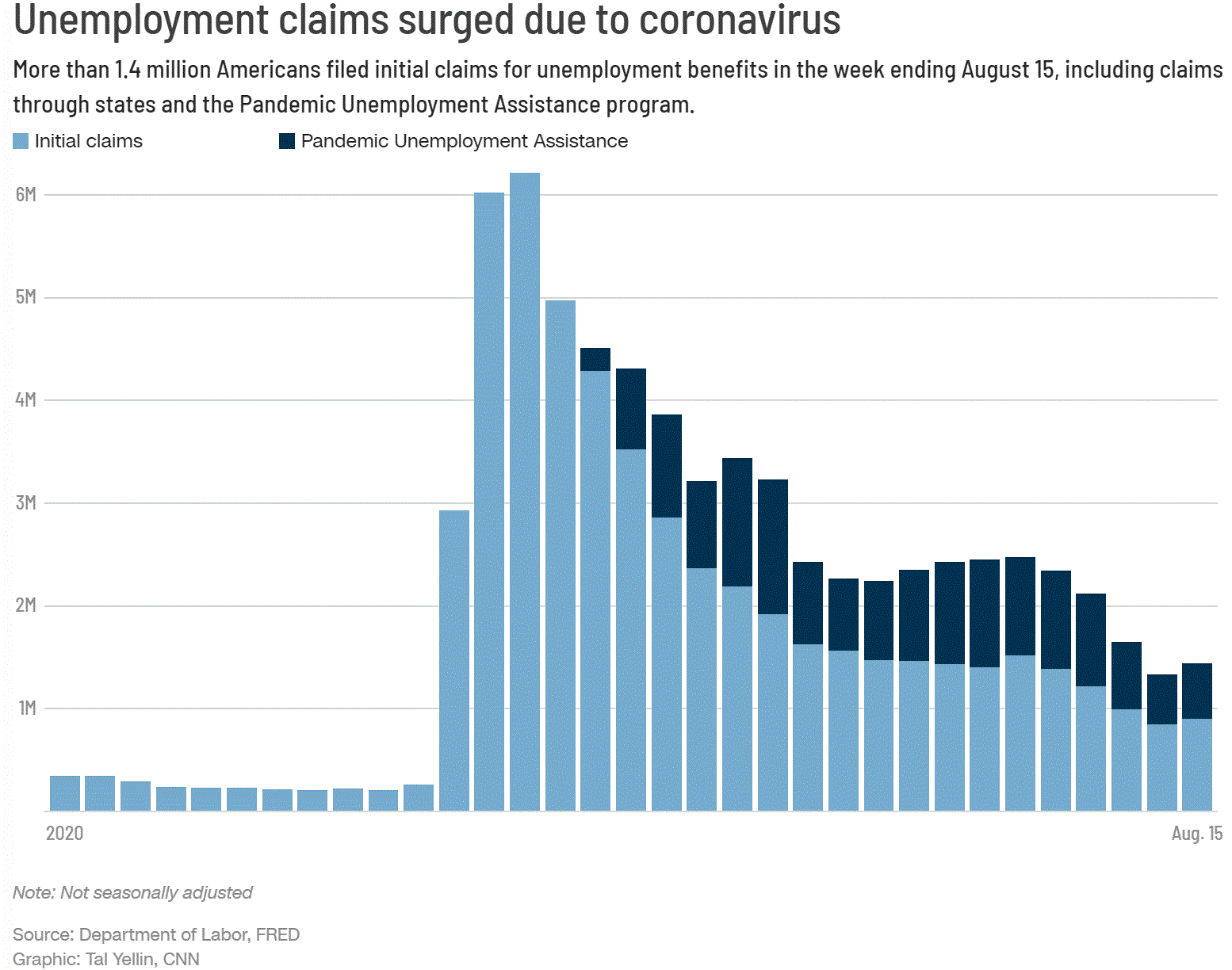
By Anneken Tappe, CNN Business
August 20, 2020
New York (CNN Business)Another 1.1 million Americans filed initial claims for unemployment benefits on a seasonally adjusted basis last week, dashing economists' hopes for a second-straight week with fewer than 1 million claims.
Economists were optimistic that the US jobs market would be on a steady trajectory toward recovery. But last week's claims exceeded forecasts after the previous week's report was the first below 1 million since March, the Department of Labor reported Thursday.
Without seasonal adjustments, 891,510 people filed regular first-time claims for benefits. On top of that, claims for Pandemic Unemployment Assistance program, which Congress introduced during the coronavirus pandemic, also rose to 542,797. Adding these numbers together, unadjusted first-time claims stood at 1.4 million last week.
That suggests the jobs recovery slowed down this month. Because the survey for the Bureau of Labor Statistics' August jobs report also wrapped last week, that could dampen economists' forecasts for the jobs report early next month.
But the disappointment from the initial claims number was offset by a larger-than-expected decrease in continued jobless claims, which count people who have filed regular claims for at least two weeks in a row. That number decreased to 14.8 million -- still staggeringly high but also at the lowest level since the first week of April.
Looking at the numbers, "it's clear that what is keeping people unemployed is not overly generous benefits, but a lack of job openings," said Andrew Stettner, senior fellow at The Century Foundation, a think tank, in emailed comments.
All in all, nearly 28.1 million Americans were claiming benefits under the various government programs available in the week ending August 1, only about 200,000 fewer than in the previous week.
After months of shocking economic data, these eyewatering big numbers might not seem as shocking anymore as they really are. But the road to recovery remains long and arduous.
The Federal Reserve said in its July meeting minutes Wednesday that any rebound of the jobs market depends on a reopening and businesses, which in turn depends on the path of the virus and what we do to contain it.
Meanwhile, those filing for benefits are no longer receiving the $600 weekly boost Washington put in place as part of the CARES Act, which expired at the end of July. Instead, benefits have dwindled to their regular amount, which is commonly less than workers made on their salaries.
"Every day that passes without an extension of supplemental unemployment benefits brings greater and greater pain for tens of millions of families," Stettner said.
Since Congress has been unable to agree a new stimulus deal so far, President Donald Trump signed an executive action to boost jobless benefits by $300 per week by diverting disaster relief money from the Federal Emergency Management Agency.
So far only seven states -- Iowa, Arizona, New Mexico, Louisiana, Utah, Colorado, and Missouri -- have applied for the federal funding to pay out the additional benefits Trump signed off on.
But it might still take a while until this money makes its way to people's wallets. States will have to create a new system to pay out the executive action benefits because the money comes from a different pot of money and is subject to different rules. And that could take weeks.
One way or another, states are struggling to foot the bill for the millions of unemployment claims that they have to pay out and are borrowing from the Treasury to make ends meet. California, New York and Texas continue to be the biggest borrowers.
-- Katie Lobosco contributed to this story.